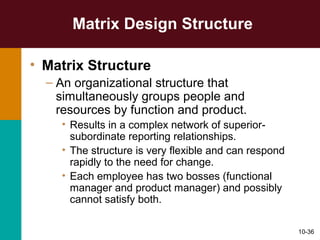This document discusses organizational structure and culture. It covers factors that influence organizational structure like the environment, strategy, technology and human resources. It describes different types of organizational structures including functional, divisional, matrix and hybrid structures. It also discusses job design, grouping jobs into functions, allocating authority through hierarchies, and coordinating functions. The key aspects of organizational structure, how they are designed and influenced are summarized.

































































